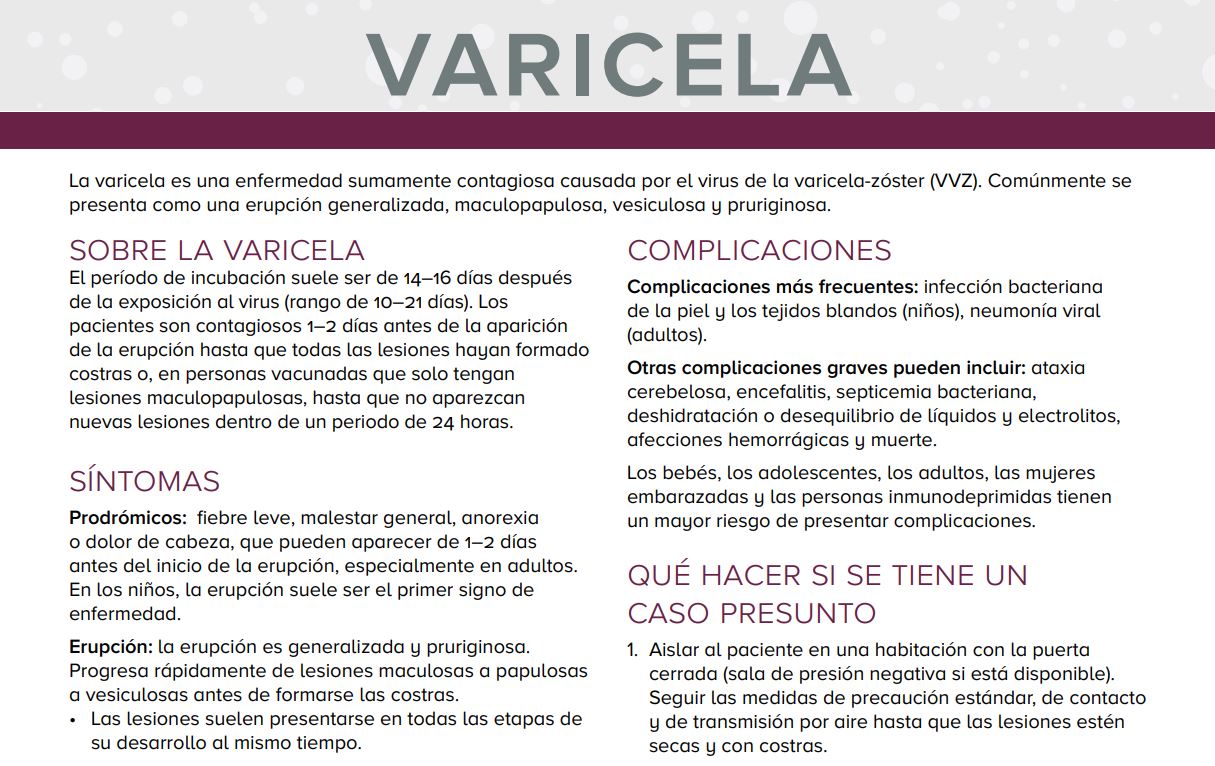Key points
- Varicella is a highly contagious disease caused by the varicella-zoster virus (VZV).
- It usually presents as a generalized pruritic maculopapulovesicular rash.
- Two doses of the varicella vaccine are more than 90% effective at preventing varicella.
Text equivalent
Varicella is a highly contagious disease caused by the varicella-zoster virus (VZV). It usually presents as a generalized pruritic maculopapulovesicular rash.
About varicella
The incubation period is typically 14–16 days after exposure to the virus (range 10–21 days). Patients are contagious 1–2 days before rash onset until all lesions have crusted or, in vaccinated people with only maculopapular lesions, until no new lesions appear within a 24-hour period.
Symptoms
Prodromal: Mild fever, malaise, anorexia or headache may occur 1–2 days before rash onset, particularly in adults. In children, the rash is often the first sign of disease.
Rash: The rash is generalized and pruritic. It progresses rapidly from macular to papular to vesicular lesions before crusting.
- Lesions are typically present in all stages of development at the same time.
- Usually appears first on the chest, back, and face, then spreads over the entire body.
- Typically lasts 4–7 days.
- Vaccinated persons may only have maculopapular lesions and usually have fewer number of lesions (and shorter duration of illness).
Complications
Most common complications: bacterial skin and soft tissue infection (children), viral pneumonia (adults).
Other severe complications can include: cerebellar ataxia, encephalitis, bacterial sepsis, dehydration/fluid and electrolyte imbalance, hemorrhagic conditions, and death.
Infants, adolescents, adults, pregnant women, and immunocompromised persons are at increased risk of complications.
What to do if you have a suspected case
- Isolate the patient in a room with a closed door (negative pressure room if available). Follow standard, airborne, and contact precautions until lesions are dry and crusted.
- Only staff with evidence of varicella immunity (see below) should care for patients with varicella.
- Contact the local and/or state health department to report cases and coordinate sending specimens for laboratory testing. The best method for laboratory confirmation of varicella is PCR testing of skin lesions (scabs and vesicular fluid.) See lab resources below/on next page.
Evidence of varicella immunity
Evidence of immunity to varicella includes any one of the following:
- Documentation of age-appropriate vaccination (one dose for preschool-aged children and two doses for school-aged children, adolescents, and adults).
- Laboratory evidence of immunity or laboratory confirmation of disease.
- Diagnosis or verification of history of varicella or herpes zoster by a healthcare provider.
- Birth in the United States before 1980. (This should not be considered evidence of immunity for healthcare personnel, pregnant women, or immunocompromised persons.)
Vaccine recommendations
Two doses of the varicella vaccine are more than 90% effective at preventing varicella.


